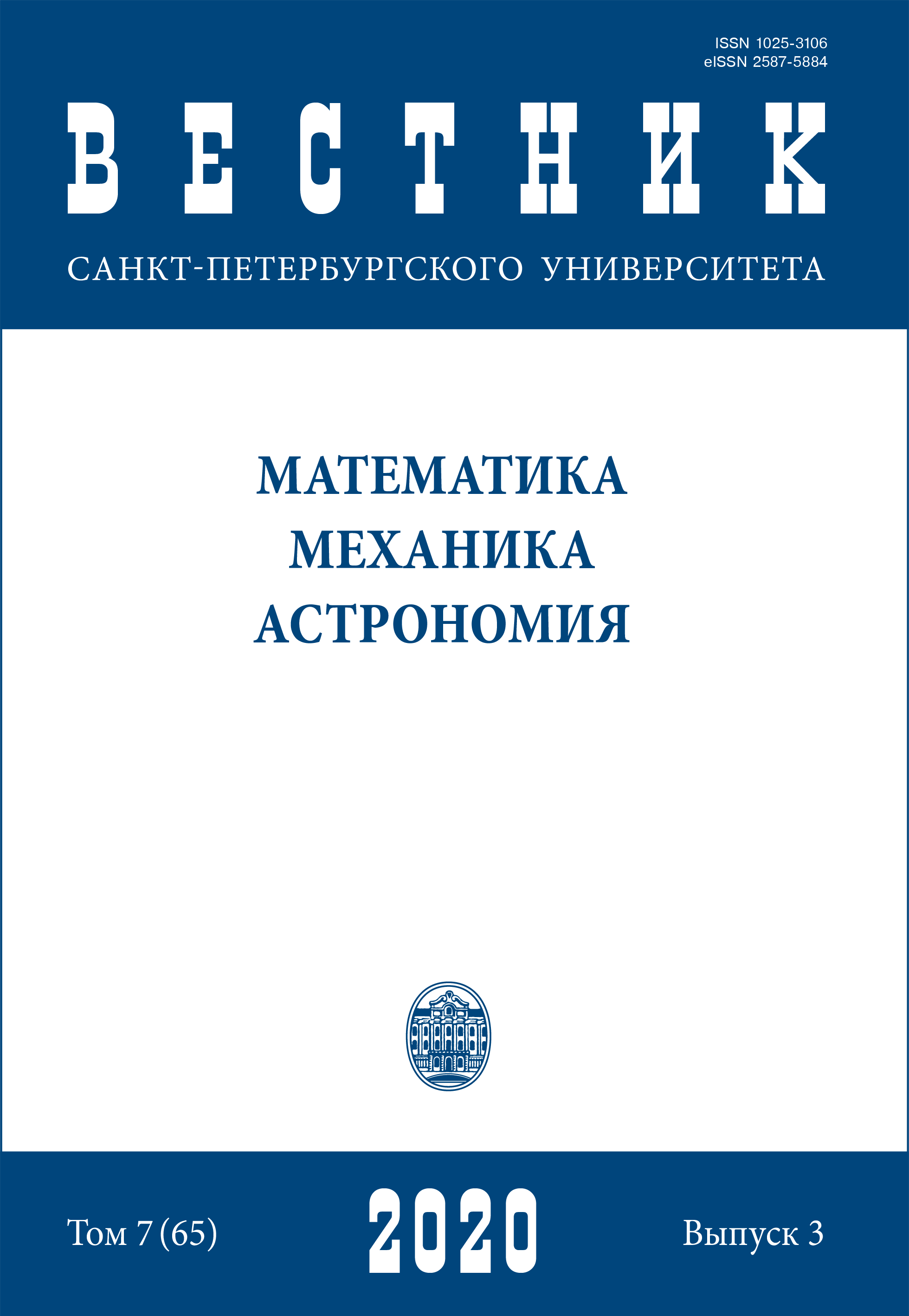Two-dimensional homogeneous cubic systems: Classification and normal forms - VI
DOI:
https://doi.org/10.21638/spbu01.2020.302Abstract
The present article is the sixth in a series of papers dedicated to two-dimensional cubic homogeneous systems. It considers a case when a homogeneous polynomial vector in the right-hand part of the system does not have a common factor. A set of such systems is divided into classes of linear equivalence, wherein the simplest system being a third-order normal form is distinguished on the basis of properly introduced principles. Such a form is defined by the matrix of its right-hand part coefficients, which is called the canonical form (CF). Each CF has its own arrangement of non-zero elements, their specific normalization and canonical set of permissible values for the unnormalized elements, which relates the CF to the selected class of equivalence. In addition to classification, each CF is provided with: a) conditions on the coefficients of the initial system, b) non-singular linear substitutions that reduce the right-hand part of the system under these conditions to the selected CF, c) obtained values of CF’s unnormalized elements. The proposed classification was primarily created to obtain all possible structures of generalized normal forms for systems with CF in the unperturbed part. The article presents another application of the resulting classification related to finding phase portraits in the Poincare circle for CF.
Downloads
References
Литература
References
Downloads
Published
How to Cite
Issue
Section
License
Articles of "Vestnik of Saint Petersburg University. Mathematics. Mechanics. Astronomy" are open access distributed under the terms of the License Agreement with Saint Petersburg State University, which permits to the authors unrestricted distribution and self-archiving free of charge.




